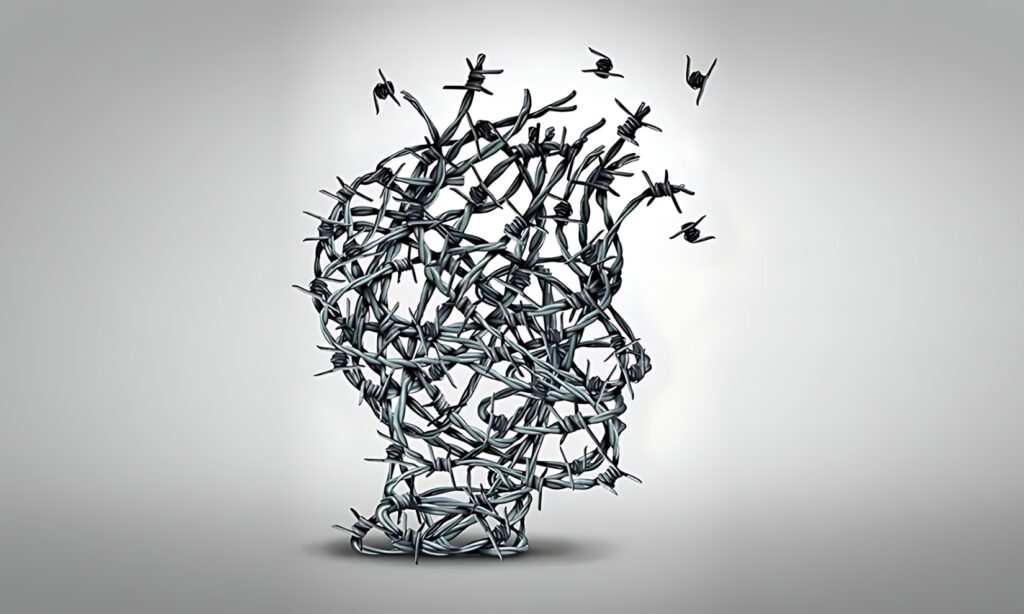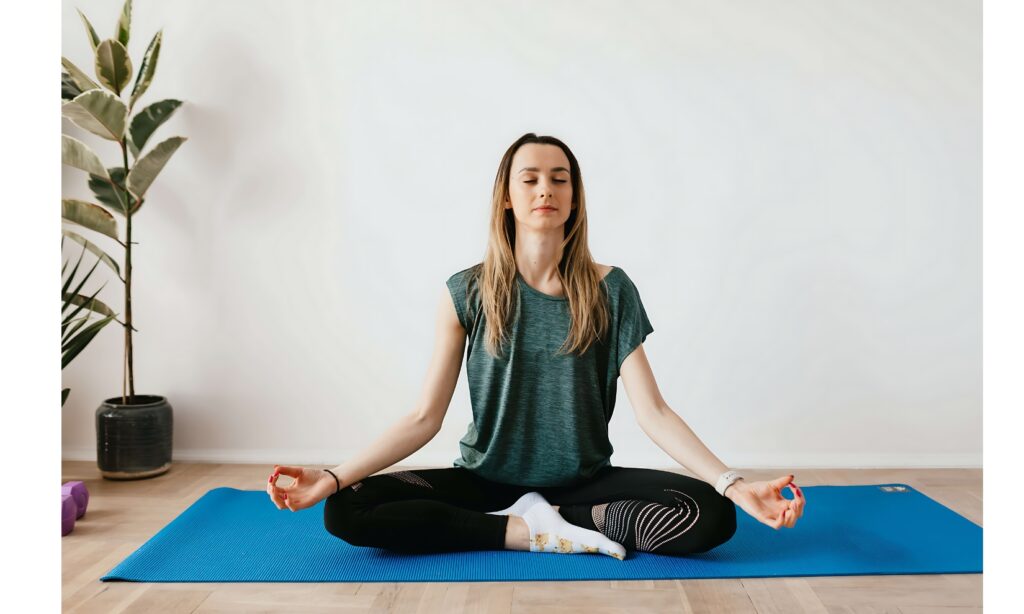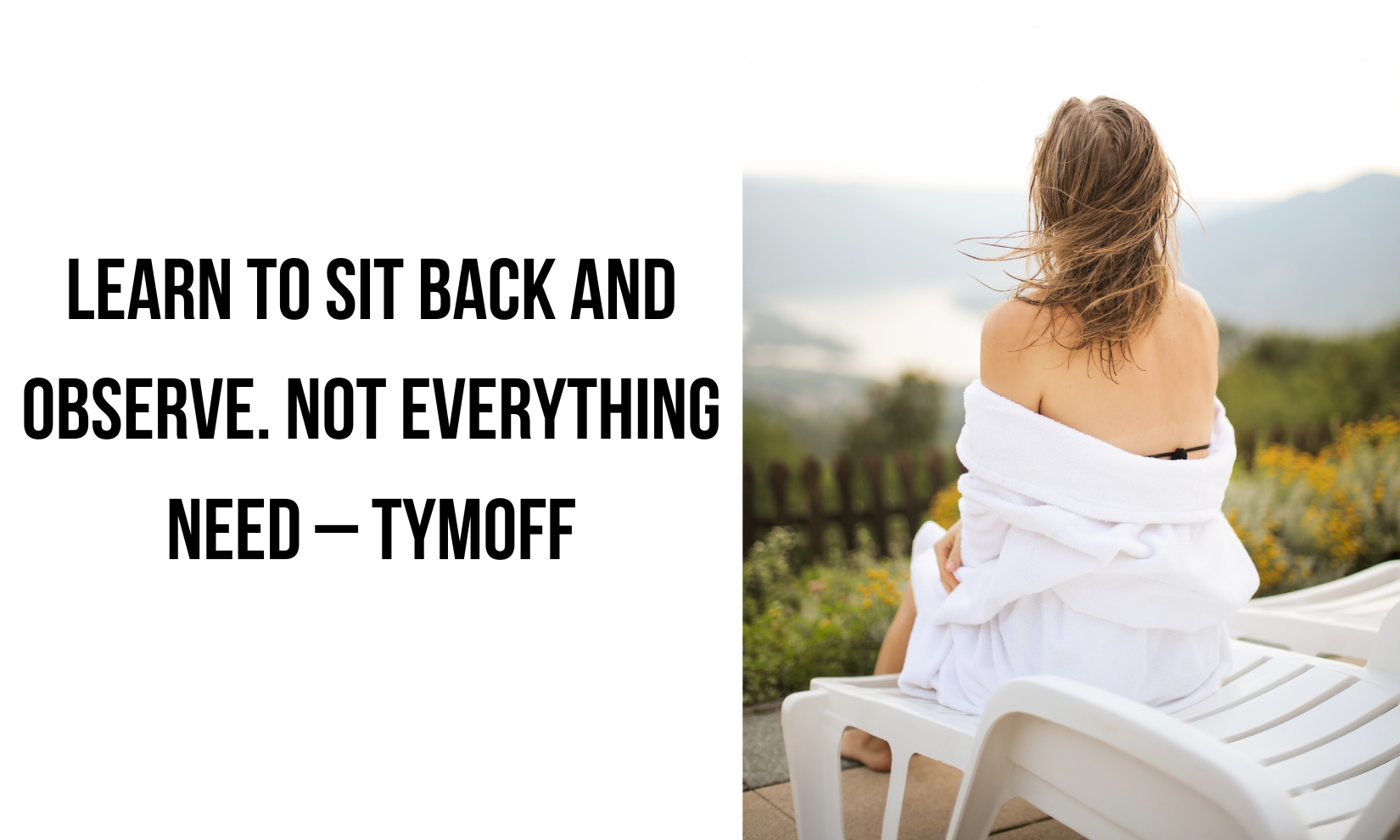In our fast-paced world, where instant reactions often trump thoughtful responses, Tymoff’s wisdom rings true: “Learn to sit back and observe. Not everything needs…” This profound statement invites us to pause, reflect, and harness the power of quietness in our daily lives.
Let’s dive deep into this concept and explore how it can transform our perception, enhance our relationships, and lead to more mindful decision-making.
The Force of Perception
Perception shapes our reality. It’s the lens through which we view the world, influencing our thoughts, feelings, and actions. By learning to sit back and observe, we fine-tune this lens, allowing for clearer, more nuanced understanding. The power of observation lies in its ability to reveal hidden patterns, uncover underlying motivations, expose biases and assumptions, and foster empathy and understanding.
Consider this: A study by the University of California found that individuals who practiced mindful observation for just 10 minutes a day reported a 16% increase in overall life satisfaction after eight weeks. This highlights the transformative potential of simply sitting back and observing.
Our perception is influenced by various factors, including our past experiences, cultural background, and current emotional state. By developing a keen sense of observation, we can begin to recognize these influences and gain a more objective view of the world around us. This heightened awareness allows us to make more informed decisions and respond to situations with greater wisdom and compassion.
The power of observation lies in its ability to:
- Reveal hidden patterns
- Uncover underlying motivations
- Expose biases and assumptions
- Foster empathy and understanding
Consider this: A study by the University of California found that individuals who practiced mindful observation for just 10 minutes a day reported a 16% increase in overall life satisfaction after eight weeks. This highlights the transformative potential of simply sitting back and observing.
Breaking Free from Reactivity

Reactivity often leads to hasty decisions and missed opportunities. By cultivating awareness and practicing stillness, we can break free from this cycle. Where reactivity breeds impulsive responses and emotional instability, observation fosters thoughtful considerations and emotional intelligence.
To transition from reactivity to observation, try pausing before responding, taking deep breaths to center yourself, and asking, “What am I not seeing?” Consider the long-term implications of your response before acting. This simple practice can dramatically change the outcome of challenging situations.
Reactivity is often rooted in our fight-or-flight response, a primitive survival mechanism that doesn’t always serve us well in modern society. By learning to observe our triggers and automatic responses, we can begin to rewire our brains for more thoughtful, measured reactions. This not only improves our decision-making but also reduces stress and enhances our overall well-being.
Tracking Down Shrewdness in Quietness
Silence is not just the absence of noise; it’s a powerful tool for introspection and understanding. In the quietness, we can hear the whispers of insight that are often drowned out by the clamor of daily life.
“In the attitude of silence the soul finds the path in a clearer light, and what is elusive and deceptive resolves itself into crystal clearness.” – Mahatma Gandhi
Embracing quietness offers numerous benefits, including enhanced focus and concentration, improved problem-solving abilities, greater self-awareness, and reduced stress and anxiety. In our noisy, always-on world, moments of silence have become rare and precious. By intentionally creating space for quietness in our lives, we open ourselves up to deeper insights and more creative solutions to life’s challenges.
Case Study: A tech startup implemented daily 15-minute “quiet time” sessions. After three months, employee productivity increased by 23%, and stress-related sick days decreased by 31%.
Developing the Ability to Appreciate People on a Deeper Level

Observation is the cornerstone of empathy. By sitting back and truly seeing others, we develop a richer understanding of their motivations, fears, and desires. To deepen your appreciation for others, practice active listening without interrupting, observe non-verbal cues, suspend judgment, and approach interactions with curiosity. Reflect on your observations before drawing conclusions.
This practice of deep observation can transform our relationships, both personal and professional. When we take the time to truly see and understand others, we build stronger connections, foster trust, and create an environment of mutual respect and appreciation.
Consider keeping an “observation journal” where you note interesting behaviors, expressions, or interactions you witness throughout your day. Over time, this practice can significantly enhance your ability to read people and situations more accurately.
Applying “Not All Things Need a Response”
In a world that often demands immediate reactions, choosing not to respond can be a powerful act. It allows for more thoughtful and measured responses when needed, de-escalation of tense situations, conservation of emotional energy, and improved decision-making.
Consider not responding in heated arguments, when you lack sufficient information, if your emotional state might lead to regrettable actions, or when silence can convey your message more effectively. This doesn’t mean being passive or avoidant, but rather choosing your moments of engagement wisely.
The art of not responding is closely tied to the concept of “wu wei” in Taoism, which translates to “non-doing” or “effortless action.” It’s about aligning with the natural flow of things rather than forcing outcomes. By learning when to step back and when to engage, we can navigate life’s challenges with greater ease and effectiveness.
Pause Before Responding
The simple act of pausing can dramatically improve the quality of our interactions and decisions. Pausing allows emotions to settle, provides time for rational thought, enables consideration of multiple perspectives, and reduces the likelihood of knee-jerk reactions.
Tip: Try the 5-second rule. Before responding to any challenging situation, count to five in your head. This brief pause can make a world of difference.
During this pause, take a moment to check in with yourself. How are you feeling? What thoughts are running through your mind? Are you reacting based on past experiences or present reality? This self-awareness can help you respond from a place of clarity rather than reactivity.
Practice Mindfulness

Mindfulness is the art of being fully present in the moment. It’s a powerful tool for enhancing our ability to observe and understand the world around us. Simple mindfulness exercises include focused breathing, body scans, mindful eating, and observation walks. These practices can significantly improve your ability to sit back and observe.
Regular mindfulness practice has been shown to reduce stress, improve focus, and enhance emotional regulation. It’s like a gym workout for your mind, strengthening your ability to stay present and observe without getting caught up in judgments or reactions.
Start with just a few minutes a day and gradually increase your practice time. You might be surprised at how quickly you start noticing positive changes in your ability to observe and respond to life’s challenges.
Learn from Nature
Nature is the ultimate teacher of patient observation. By observing natural phenomena, we can learn valuable lessons about timing, persistence, and adaptability. Try cloud watching, tracking plant growth, studying animal behavior, or noting daily weather changes to hone your observation skills.
Nature operates on its own timeline, unbothered by our human sense of urgency. By immersing ourselves in natural settings and closely observing the rhythms of the natural world, we can cultivate a sense of patience and perspective that carries over into our daily lives.
Consider starting a nature journal where you record your observations. Over time, you’ll likely notice patterns and cycles that you hadn’t been aware of before, deepening your connection to the natural world and enhancing your overall observational skills.
Journal Your Observations
Keeping an observation journal can help solidify your insights and track your progress in developing this skill. Set aside dedicated time each day for journaling, write without judgment or self-censorship, include both external observations and internal reflections, and review your entries periodically to identify patterns and growth.
Your journal can be a powerful tool for self-discovery and personal growth. As you review your entries over time, you may notice recurring themes or patterns in your thoughts and behaviors. This awareness can be the first step towards positive change and personal development.
Don’t worry about perfect prose or profound insights. The act of regularly recording your observations is valuable in itself, training your mind to pay closer attention to the world around you and your inner landscape.
Embrace Silence

In our noisy world, silence can feel uncomfortable. Yet, it’s in silence that we often find our deepest insights. To embrace silence, start with short periods and gradually increase duration, create a dedicated quiet space in your home, practice silent meditation, and engage in activities that naturally invite silence, like fishing or stargazing.
Silence allows us to hear our own thoughts more clearly and can lead to moments of profound insight or creativity. Many great thinkers and innovators throughout history have emphasized the importance of solitude and silence in their creative process.
If you find silence challenging at first, don’t be discouraged. Like any skill, getting comfortable with silence takes practice. Start with just a few minutes a day and gradually increase the duration as you become more comfortable.
Seek Perspective
Broadening our perspective allows for more comprehensive observations and deeper understanding. Travel to new places, read diverse literature, engage in conversations with people from different backgrounds, and try new experiences outside your comfort zone to expand your perspective.
Each new perspective we encounter enriches our understanding of the world and challenges our existing beliefs and assumptions. This process of continuous learning and growth is essential for developing a more nuanced and empathetic worldview.
Consider joining a book club that focuses on diverse authors, or volunteering for an organization that serves a community different from your own. These experiences can provide valuable opportunities to see the world through different eyes.
Build Emotional Resilience
Emotional resilience allows us to observe and respond to life’s challenges with greater equanimity. Practice self-compassion, develop a growth mindset, engage in regular physical exercise, and cultivate a strong support network to build your emotional resilience.
Resilience isn’t about avoiding difficult emotions, but rather about developing the capacity to navigate them effectively. By strengthening our emotional resilience, we become better equipped to sit back and observe even in challenging situations, rather than getting swept away by our immediate reactions.
Remember that building resilience is a process. Be patient with yourself and celebrate small victories along the way. Each time you navigate a difficult situation with grace and composure, you’re strengthening your resilience muscle.
Practice Detachment
Detachment doesn’t mean not caring; it means observing without being overwhelmed by emotions. Recognize that you are not your thoughts or emotions, observe your thoughts and feelings without judgment, practice letting go of what you can’t control, and focus on the present moment rather than past or future worries.
This practice of detachment is closely related to the Buddhist concept of non-attachment. It’s about developing the ability to engage fully with life while not clinging to outcomes or getting overly identified with our thoughts and emotions.
One way to practice detachment is through the technique of “labeling” your thoughts and emotions. When you notice a strong thought or feeling arising, simply label it (e.g., “worrying,” “anger,” “excitement”) and then let it pass without getting caught up in it. This can help create a sense of space between you and your experiences, allowing for more objective observation.
Conclusion
Learning to sit back and observe, as Tymoff wisely suggests, is a transformative practice that can enrich every aspect of our lives. By cultivating quietness, mindfulness, and keen observation, we gain deeper insights, make better decisions, and foster more meaningful connections with others and ourselves.
Remember, not everything needs an immediate response. In the space between stimulus and response lies our greatest power – the power to choose. So take a deep breath, sit back, and observe. The world has much to teach us if we’re willing to be still and listen.
FAQ’s
What is meant by “The Force of Perception”?
The power of how we see and interpret the world, shaping our reality.
How can I improve my perception skills?
Practice mindful observation, challenge assumptions, seek diverse views, and reflect regularly.
What does it mean to break free from reactivity?
Moving from impulsive responses to thoughtful actions.
How can I stop being reactive?
Pause before responding, practice mindfulness, identify triggers, and use breathing techniques.
What does “finding wisdom in quietness” mean?
Gaining insights through moments of silence and reflection.
What practices can help me embrace quietness?
Meditation, creating quiet spaces, nature walks, and solo activities.
What is meant by appreciating people on a deeper level?
Understanding others’ perspectives and motivations beyond surface-level interactions.
Also Read : María Bernarda Giménez: Meet Christian Giménez’s wife

